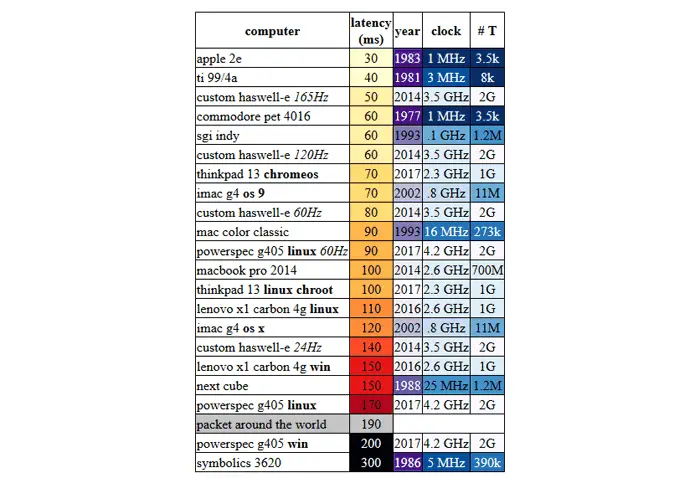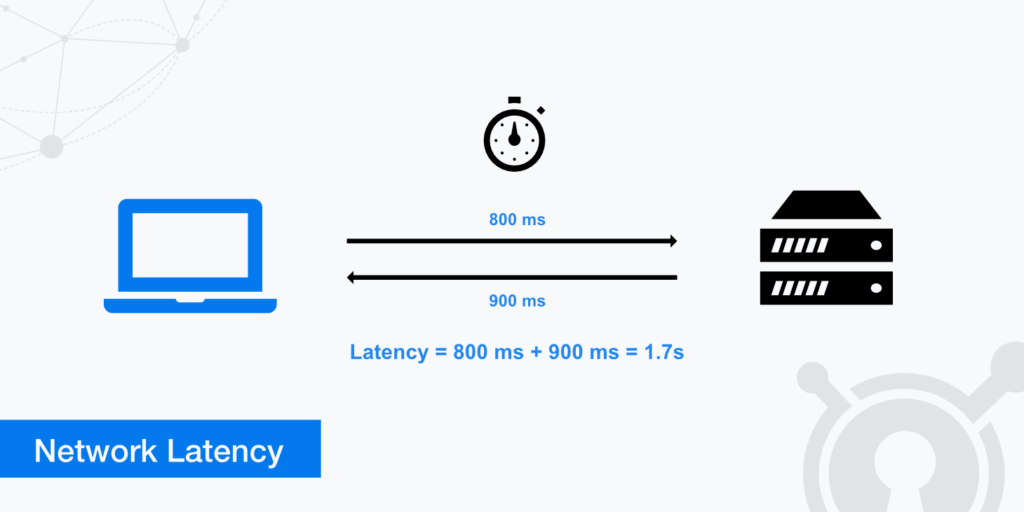Online Keyboard Latency Test
Press and release a key as quickly as possible to test your keyboard’s latency.
Shortest Key Hold: N/A ms
Estimated Scan Rate: N/A Hz
What Is Keyboard Latency?
Keyboard latency is the delay between when a key is pressed on a keyboard and when the corresponding action is executed on the screen.
It is also known as input lag, response time, or delay.
Keyboard latency can be caused by a variety of factors. This includes hardware limitations, software issues, and network latency.
Hardware-based keyboard latency is typically caused by the mechanical properties of the keyboard. By that, we mean the type of switches used and the build quality.

For example, some keyboards may have a longer key travel distance or require more force to actuate the key. These can result in slower response times.
Additionally, the connection type can also affect keyboard latency.
Wired keyboards generally have lower latency than wireless ones. This is because there is no need for the data to be transmitted over a wireless connection.
Software-based keyboard latency is caused by the OS or software applications that process the input from the keyboard.
This type of latency can be affected by factors such as the speed of the processor and the amount of memory available. It can also be influenced by the settings and configurations of the operating system or software application.
Network latency can also affect keyboard latency in some cases.

For example, if the keyboard input is being transmitted over a network connection, there may be additional delays. You will notice such network latency issues in a remote desktop scenario.
In short, keyboard latency is an important factor to consider when using a keyboard for any purpose.
It can significantly impact the user experience. Understanding the factors that contribute to keyboard latency can help identify such issues.
Importance of Keyboard Latency
Keyboard latency is an important factor for anyone who uses a keyboard regularly.
But it can be especially crucial for gamers, writers, and programmers who rely on quick and accurate keystrokes.
Here are some reasons why keyboard latency is important:
1. Gaming
In gaming, even a slight delay in keyboard input can have a significant impact on gameplay.
Gamers require quick response times and minimal input lag to perform their best.
A delay of even a few milliseconds can lead to missed opportunities. You wouldn’t want slower reaction times and a reduced overall gaming experience.

If you want to enhance your gaming experience, in addition to the keyboard, you can also use Custom Metal Signs to create a unique gaming space.
When customizing, add your favorite game elements and your favorite color, which can be used not only for lighting but also as decoration.
2. Writing
Writers and typists also benefit from low keyboard latency.
When typing quickly, delays in keystrokes can cause frustration and disrupt the flow of writing.
Are you a professional writer, or do you spend long periods of time typing? If so, keyboard latency can even lead to physical discomfort and fatigue.

3. Programming
Programmers also require a low-latency keyboard for efficient coding.
Quickly entering commands and executing code can save time and increase productivity. Additionally, a keyboard with low latency can help reduce the chances of making errors due to slow response times.
4. Accessibility
Keyboard latency can also be an important consideration for individuals with disabilities.
Those who rely on alternative input devices need to ensure that their input device has minimal latency. This ensures optimal performance and accessibility.
Here we are talking specifically about users of switches or adaptive keyboards.
All in all, low keyboard latency is essential for a comfortable and efficient keyboard experience. It can improve the accuracy of keystrokes and lead to a more satisfying overall experience.
How to Test Keyboard Latency?
There are several software applications available that can specifically test keyboard latency. These applications may offer more detailed measurements and analysis than online tools.
In a way, they can be useful for more advanced users. When testing keyboard latency, run multiple tests to ensure accurate results.
Regular testing can identify any issues and ensure maximum keyboard performance.
Factors Affecting Keyboard Latency
Keyboard latency can be affected by a variety of factors, including hardware, software, and network issues.
Understanding these factors can help identify and address any latency issues they may be experiencing.
Here are some of the most common factors that can affect keyboard latency:
- Keyboard switches: Some switches require more force to actuate or have a longer travel distance. These can result in slower response times.
- Keyboard firmware: Outdated firmware or firmware with known issues can cause delays in input response.
- Operating system: The operating system being used can have an impact on keyboard latency. For example, Windows operating systems often cause keyboard latency issues. This is due to certain settings or driver issues.
- CPU and RAM: If the computer’s CPU or RAM is overloaded, it may take longer for the keyboard input to be processed and displayed on the screen.
- Network latency: If keyboard input is being transmitted over a network connection, there may be delays due to network latency.
- Peripheral devices: Other peripheral devices connected to the computer can affect keyboard latency. For example, if a mouse is using up too much processing power, it may impact the speed and responsiveness of the keyboard.
- Connection type: Wired keyboards generally have lower latency than wireless ones. This is due to the fact that data is transmitted directly through the cable without the need for a wireless connection.
You can optimize your keyboard setup and minimize latency issues by identifying these factors.
FAQs
Ques 1: What is normal keyboard latency?
Ans: A typical latency value for a good keyboard is less than 4 milliseconds.
Generally, wired keyboards have lower latency compared to wireless keyboards. This is because they are directly connected to the computer.
The specific latency value can vary depending on various factors.
This includes keyboard switches quality, firmware, OS, and other system components. Regularly test keyboard latency and optimize the setup for optimal efficiency.
Ques 2: How much latency does a 1000Hz keyboard have?
Ans: If a keyboard has a polling rate of 1000Hz, it means that the keyboard is polled every 1 millisecond.
Therefore, the maximum input latency for this keyboard would be 6 milliseconds (1 ms for polling rate + 5 ms for processing time).
However, the actual latency value may vary based on other factors.
Ques 3: What is the average latency for a wired keyboard?
Ans. The reported average latency for a wired keyboard is 0.2552 seconds, which is approximately 255 milliseconds.
Note that the reported latency value may not be representative of all wired keyboards.
Ques 4: Is 61 ms latency good?
Ans. A latency of 61 milliseconds (ms) is slightly higher than what is considered acceptable for a smooth user experience.
An acceptable latency is typically around 40-60 ms or lower. A latency of over 100 ms can result in noticeable lag, particularly in online gaming.
Ques 5: Is 100ms latency bad?
Ans. A latency of 100ms is considered relatively high and may result in noticeable lag, particularly in online gaming.
Anything at 100ms or less is generally considered acceptable for gaming.
But a latency of 20-40ms is considered optimal for a smooth and responsive user experience.
The Bottom Line
Keyboard latency can have a significant impact on user experience and productivity.
Identifying the factors that can affect keyboard latency, such as hardware, software, and network issues, is key.
By ensuring a responsive keyboard, you can improve your overall computing experience.
